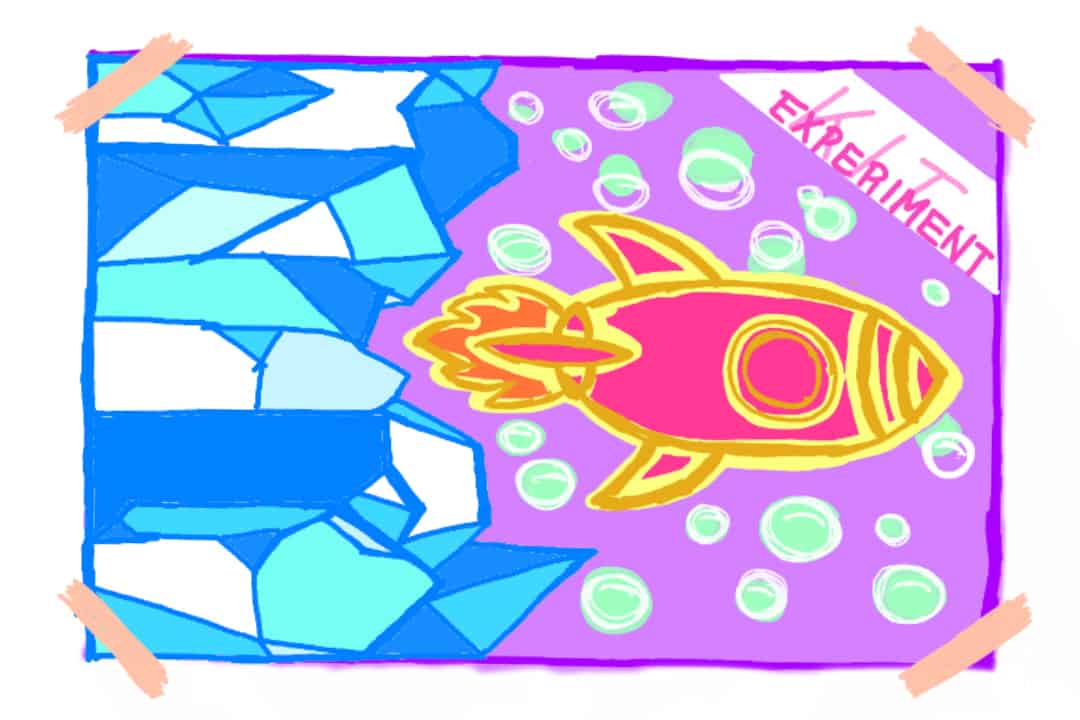Scientists are stereotypically reputed to be cold-blooded maniacs, conducting insane experiments in secret labs and working for morally dubious institutions. Pop culture tends to portray scientists as wickedly smart but very awkward in social situations, but these stereotypes aren’t always accurate.
No matter what your impressions of scientists are, here is a compilation of some simple science experiments you can perform with household items.
Homemade lava lamp
Materials: One clean plastic 16 oz soda bottle with cap, vegetable oil, one Alka-Seltzer tablet, food colouring of your choice, and water.
Procedure:
- Fill the plastic bottle 75 per cent full with vegetable oil.
- Add water up to the neck of the bottle, leaving a little space between the water line and the brim of the bottle.
- Add droplets of food colouring into the bottle until a bright colour is achieved.
- Break the Alka-Seltzer tablet into small pieces and add one piece at a time.
- You can tip, twist, or shake the bottle for more action!
Alka-Seltzer is an antacid commonly used to relieve an upset stomach, with a chemical composition of basic sodium bicarbonate and acidic citric acid. The carbon dioxide bubbles you observe in the lava lamp are the result of an acid-base reaction. When dissolved, sodium bicarbonate and citric acids collide and react to produce carbon dioxide.
Oil and water also do not mix well and have clear separations because oil is hydrophobic, or ‘water fearing.’ The long carbon fatty acid chains in oil do not react with water molecules, resulting in the separations we see during oil spills.
Making a pasta rocket engine
Materials: Tube-shaped pasta that can stand up on its own, active dry yeast, mason jar, hydrogen peroxide, and a lighter.
Procedure:
- Drill a small hole through the mason jar cap.
- Fill up the mason jar two-thirds full with hydrogen peroxide solution.
- Add a quarter teaspoon of yeast into the jar and mix gently.
- Put the punctured lid on and place your pasta over the hole, without screwing it in.
- Light the top of the pasta with a lighter.
According to Newton’s third law of motion, any force exerted will result in an equal and opposite force in return. For a rocket to launch, it requires a tremendous amount of hot gases forced out of the back via combustion. The pasta engine in this experiment demonstrates the fuel burning process and energy release that mimic the combustion in real rockets, but does not take off with this setup.
The pasta rocket is a model of hybrid rockets that burns a solid fuel, like the hydrocarbon in pasta, in the presence of a liquid oxidizer. The interaction of yeast with hydrogen peroxide solution generates oxygen gases. The advantage of such a rocket design for real space missions is that the presence of a liquid oxidizer allows more precise control of flow at a low cost, and it is easy to maneuver and manage simultaneously. For this experiment, the design allows us to turn off the flame without the risk of explosion.
Glow-in-the-dark ice
Materials: Tonic water with quinine, ice cube tray, working freezer, and ultraviolet black light.
Procedure:
- Dilute a bottle of tonic water with a beverage you enjoy.
- Pour the contents into an ice cube tray and freeze it.
- Shine a UV light on the ice whenever you want the glowing effect.
The key ingredient to produce the glow-in-the-dark effect is the quinine in the tonic water. Quinine first absorbs the invisible ultraviolet light then emits it again in a visible wavelength, which is the underlying mechanism for fluorescence. The emission of light comes from the excited object reverting to an unexcited state. Quinine is derived from tree bark and has been used for treating malaria from the parasite Plasmodium falciparum for centuries. This pathogen causes malaria by getting into red blood cells. Quinine either kills the parasite or prevents it from growing endogenously in the body.
While science often seems restrictive and closed off, these experiments show that science can be made accessible to all. Creativity and curiosity are natural feelings we have, and science can be an avenue to fuel them!


